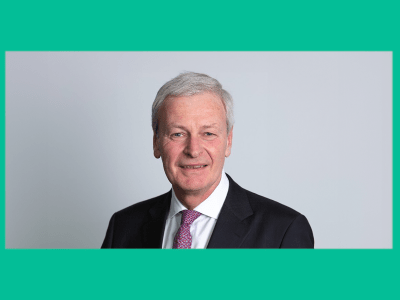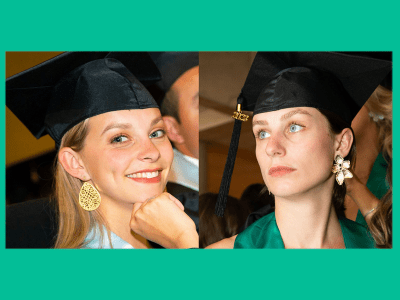Shalinki Sankar, a branding expert, presented to EU Business students in relation to how to successfully build their personal brand using social media platform LinkedIn. Throughout the pandemic, LinkedIn has become more important than ever in terms of a platform for career progression and network-building. It has offered users the ability to promote themselves, find new opportunities and connect with like-minded people despite the lack of in-person events. Shalinki advised students that if they are indeed serious about their careers, they should take LinkedIn seriously too.
Creating Your Profile
Branding yourself on LinkedIn is essential because you want to increase your visibility and be recognized in your field. The first step to building a strong personal brand is a strong profile, according to Shalinki. Each part of the profile needs careful consideration so it’s closely aligned with your career objectives.
An important element of a LinkedIn profile is the picture that you choose. This is often the first impression that someone scrolling the platform has. Thus, it is vital that it is a clear and appropriate one. Although Shalinki stated that it wasn’t necessary to take a professional picture for the platform, she emphasized the value of a high-quality, recent headshot in which you’re dressed professionally and smiling warmly. The photo should ideally convey how you feel about your career.
In relation to your LinkedIn introduction, Shalinki reminded students that recruiters use keywords when conducting profile searches. Therefore, it most certainly is not a waste of time optimizing your profile by including relevant keywords for your industry. Your headline should be attractive and encourage others to click through and read more. It should also include your specific aspirations, for example, “looking for e-commerce opportunities in the startup scene” or “seeking copywriting clients in the field of life coaching.”
One of the most important parts of your LinkedIn profile is your summary. Shalinki advised that you should treat it as a cover letter or imagine this as your opportunity to tell a recruiter what you would usually wait to say in a face-to-face scenario. It is not a space to copy and paste your resume. Instead, it should give any given reader a better understanding of your personality, and it should expand on your experience and aspirations.
To make your summary engaging, ensure that it is easy to read. It shouldn’t be jargon-filled or excessively academic, although it should be written with your desired industry in mind.
Building Your Network
Networking on LinkedIn is very different to an in-person experience. However, it also empowers users to approach people they may never otherwise encounter. Shalinki advised students to be thoughtful in their approach due to the very fact that anyone with whom they interact on the platform could be important in terms of their future careers. She also advised that students connect freely with people online and keep an open mind to people from diverse industries. Students are at an early stage in their careers, after all, and you never know which connections could be useful at a later stage.
Joining groups and adding suggested people are two ways to grow your network. The algorithm will adapt and begin to show you people who are relevant to your interests. Shalinki reminded students that personalized invitations are more powerful when they are requesting a new connection. You are more likely to be accepted this way. There even exists the option to ask for introductions in the case that a person in your network knows someone that you’d like to connect with.
On LinkedIn, you shouldn’t just build your network, but you should also nurture it. To do this, Shalinki suggested that students interact with posts, share the work of others and make your own posts to engage your audience. To be visible on LinkedIn, you must be constantly active. The very reason why Shalinki gives herself time to post on the platform on a daily basis.
14 Steps to Make LinkedIn Work For You
LinkedIn is a platform with a lot to offer. However, to access opportunities, there are steps that you must take. Shalinki shared the following fourteen suggestions for improving your LinkedIn experience.
1. Keep your profile updated in order to portray an accurate reflection of your current situation.
2. Include your skills (if relevant to your industry), and your career objectives.
3. Highlight recent experiences so people can see your growth.
4. Update and optimize your headline. This makes you more easily searchable.
5. Let people know you’re available when you’re seeking new opportunities.
6. Build your network as much as you can.
7. Research companies that interest you and follow them. They may recruit using LinkedIn, and you’ll have learned more about the company by reading their posts.
8. Use the “Advanced Search” tool to find posts and people of interest.
9. Ask for introductions when you’d like to approach someone of influence.
10. Look for your college or university alumni. The shared history gives you a point of connection.
11. Post actively. Don’t just self-promote. Share your views about industry matters and let people see your personality.
12. Get involved in groups. Join groups selectively to find like-minded people and industry peers.
13. Research your future boss and executive team. This is excellent interview preparation.
14. Comment on posts of recruiters and human resources professionals that are associated with your industry.
The Do’s and Don’ts of LinkedIn
Shalinki shared some sage advice regarding the most effective ways to use LinkedIn, as well as some common pitfalls to avoid. She suggested writing recommendations as a good way to maintain relationships, as well as requesting recommendations from others as a way to build credibility. She also encouraged students to share meaningful videos and articles to show their perspective and personality. One of Shalinki’s main points was that LinkedIn profiles are only useful if they are up to date. Students were advised to regularly refresh their profiles so that they reflect any new knowledge or experience they have.
When it comes to the “don’ts” of LinkedIn, Shalinki was extremely clear: you should not spam the platform with repeated posts of self-promotion, and you should be polite and respectful when interacting with others. LinkedIn is about networking, so you get what you give. It is only through reading and interacting with other people’s posts that you will attract similar engagement on your own. If you come across as egocentric or apathetic, you are unlikely to make strong connections. LinkedIn should not be seen as a “chore” that you mjst maintain, Shalinki says. Rather, it should be incorporated into your plan for career advancement. Otherwise, you are likely to miss out on opportunities.









